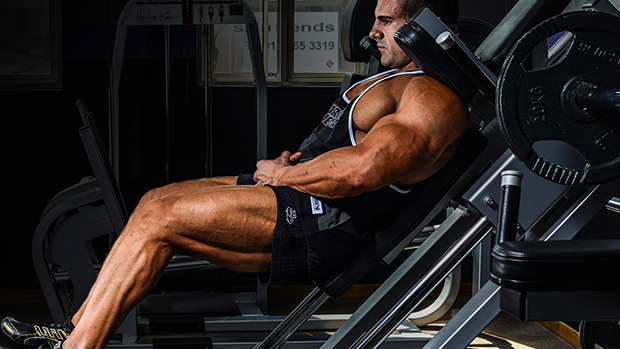The barbell shoulder press has a bad reputation for causing pain or injury. As usual though, the exercise is great; it's the people that are the problem!
Pain and injury from shoulder pressing are generally caused by not having the requisite flexibility to do the movement safely, such as:
- Limited shoulder flexion. This causes you to press the weight too far forward, or to have an arch in your lower back to compensate.
- Limited thoracic/upper back mobility. This restricts scapula movement, again causing the barbell to travel forward.
- One shoulder has more mobility than the other. This can cause anything from a subtle imbalance to a major twist during pressing.
Assess and Fix It
One of the most effective ways to test the flexibility required for an overhead press is with this lat stretch variation. Not only does it tell us a lot about our overhead mobility, it's also one of the most effective ways to achieve a better position.
We want to see a straight line through the hands, elbows, and shoulders that continues down the spine when the ribs are tucked down and the abs are engaged. This shouldn't be uncomfortable and there should be no nipping sensation in either shoulder.
Video yourself while you do the test and watch your back to assess your mobility. Here are a few things to look out for:
- The arms not being in line with the spine: This means limited shoulder flexion. It will hinder your ability to do all overhead movements.
- An arch in the lower back: This is a common compensation and can make your overhead presses look more like an incline bench press. Generally, this will come down to a bad habit or a lack of thoracic mobility.
- One arm lower than the other: This indicates that one shoulder is too tight or overused, OR one shoulder has been over-stretched and made too mobile. This is very common for people with past injuries that have gone too far with self-massage.
You can now use the assessment exercise as a drill to help fix the problem! Using very light fractional plates, go back into the same position with your arms above your head until you feel a stretch, then maintain it (but don't force it).
If you can manage 30 seconds, that's great. It's okay if you need to break sooner; the more you practice the drill the easier it'll get.
Aim for 3-5 sets for 30 seconds at a time. Over the 30 seconds, your shoulders will fatigue, relax, and start to give up that extra range. It's important to do some light barbell presses right after this drill. Once you've created new range it's more likely to "stay" if you then strengthen it. However, if you know you're really far off from a good overhead position, just stretching for now is fine.
If one shoulder happens to be lower or higher than the other, you need to even those up during this exercise or you could make the problem worse. Ideally, have someone with you to tell you when your shoulders are wonky or uneven.
If you have one shoulder that's too high it might take a while to loosen up, but you can try adjusting your shoulder position to see if that helps. If you have one shoulder that's too loose, you need to actively lift it up to the straight position and try to maintain it to build stability.
For the drill, aim for 10 reps for 3-5 sets. If you find this really challenging, then definitely practice and don't forget to integrate it into your overhead press afterwards.
As with any good mobility drill, once you can do this well and not find it challenging, the frequency you need to use it will dramatically decrease. When your arms are even – with no compensations – then a quick run-through once a month is more than enough.
Don't settle for having bad shoulder flexibility. Take the time to fix it, then you can enjoy your training knowing you have the best possible foundation!




